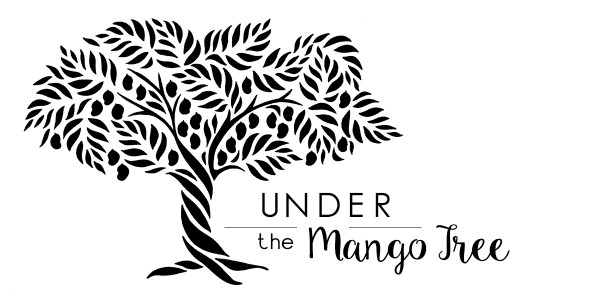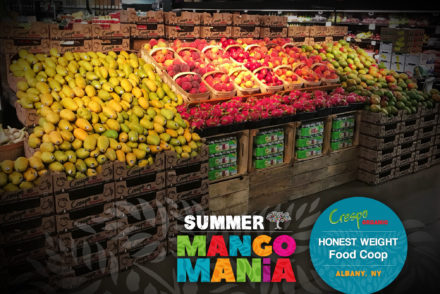Straggling Ugly Mangoes & The First Summer Mango Mania Displays
As of this weekend, all packinghouses in Oaxaca and Chiapas have shut down for the season. The last batch of round mangoes was shipped out of our packinghouse, Bola de Oro, last Friday. The final shipment of Oaxacan Ataulfo mangoes had occurred about a week earlier. The transition from south to north appeared “fine,” but, as I have mentioned before, it was actually a challenging shift. These changes in regional volumes are often difficult, particularly on the organic side of things, which is my primary focus, from where I sit, under my mango tree.
As I consistently emphasize, there are many occasions where industry reports apply to all types of fruit—organic and conventional. However, there are still numerous instances where we must specifically focus on organic produce to thrive in organic programs. When transitioning from the southern Mexican regions of Oaxaca and Chiapas to the northern production areas of Nayarit and Sinaloa (major production zones in Mexico), the information differs significantly for conventional and organic products.
On the conventional side, fruits originate from Michoacan and Jalisco, sometimes even Colima, during the transition period. This overlap makes it simpler to address gaps and accommodate diverse quality expectations and sizing requirements. In contrast, for organic products, the sourcing is primarily from Oaxaca and Chiapas (with some contribution from Michoacan), and often the timing doesn’t align.
Recalling the last several years, there were significant timing issues leading to considerable difficulties and that dreaded word, we haven’t had to use to often this season- shortages. This year, Oaxaca, possibly due to delays in late-stage bloom to set, had a prolonged season. This extension provided us with ample organic fruit, of all sizes, to bridge the gap—and I believe we all can attest that this fruit has been the sweetest and most delicious fruit we’ve experienced all season. This heightened flavor and sweetness is due to the fruit being more mature on the trees, reaching its maximum sweetness (brix) it also ripens faster. This fruit has been peak maturity for commercial production.
It’s crucial to recognize that this fruit is significantly more volatile during processing and distribution. Mature fruit, particularly fruit that has endured severe drought and its nutrient-related consequences, doesn’t process well (such as in the Hot Water Bath method). What’s more, many issues often don’t manifest immediately after processing but surface further down the supply chain, especially during cold fluctuations like sudden cold spells or storage variations. So it’s accurate to say it’s difficult to gauge how it will look on display.
Additionally, we must consider the ongoing challenges we’ve encountered in the south throughout the season—such as truck shortages, timing delays, and other obstacles that worsened toward the end, leading to larger inventories to bridge the gap. This situation poses a challenge as the fruit ripens quicker under these circumstances.
In recent weeks, noticeable problems – UGLY MANGOES – have arisen with this sensitive fruit at various points along the distribution chain, particularly in locations where trucks are colder. The challenge in this transition, particularly the current one—though to be fair, transitions are consistently complex—is that we often find mature fruit mixed with new crop (Nayarit) fruit. This means different pressures in the same box, different coloring and generally varying skin issues and discolorations in each carton. This mix is frequently contrasted with the backdrop of conventional offerings, which are typically cleaner and sourced from a more varied set of origins, diluting potential issues. Organic mangoes, while constituting a small portion of the overall mango industry thus have magnified challenges during this transition period.
The key takeaway presents a challenging situation for everyone involved, and like all transitions, it simply requires navigating with expertise, grace, and effective consumer communication. We are committed to upholding the quality of our products, packhouses, and the fruit that has helped bridge this gap. Realistically, it will take a few weeks for all this fruit to move through the entire chain.
Encouragingly, akin to all transitions, there lies another aspect—the prospect of abundant, pristine Nayarit fruit intersecting with the ample, clean Sinaloa supply. This convergence embodies what we like to call Crespo Organic Summer Mango Mania #MuchosMangoes. We already have pricing strategies and plans in motion for the mania, along with the first bountiful displays of #MangoJoy—offered at incredibly ripe prices!
I’ll conclude with the most important details about the Nayarit crop. All mangoes are coming from our main mango packinghouse- Empaque Don Jorge. Like Oaxaca and Chiapas, it is yielding smaller round fruit, which is ideally suited for the organic sector in 9-10-12 counts. Large fruit will continue to be strained and more expensive. Fortunately, the Organic Ataulfos are larger, providing a range of 12-14-16 and 18 counts—a perfect match for organic preferences and requirements.












No Comments